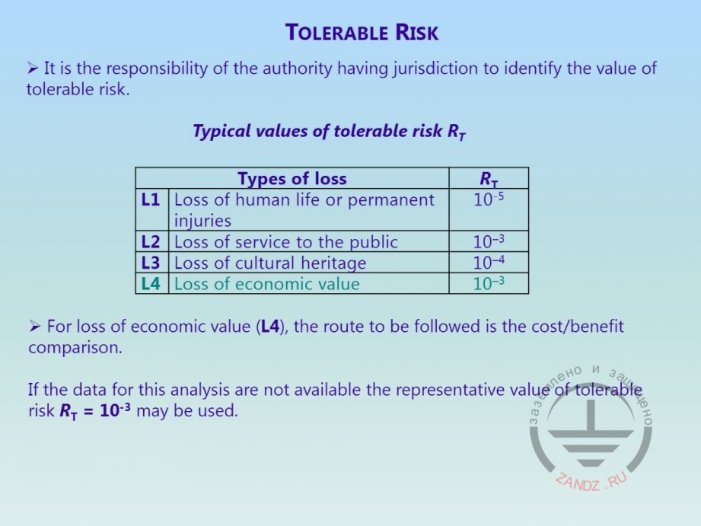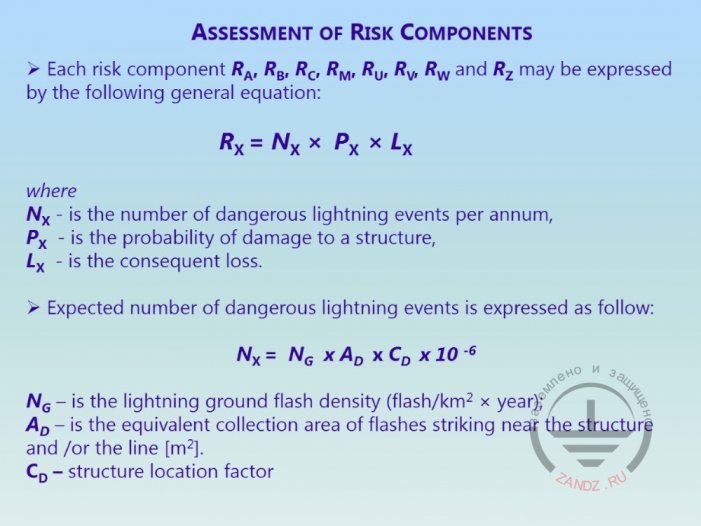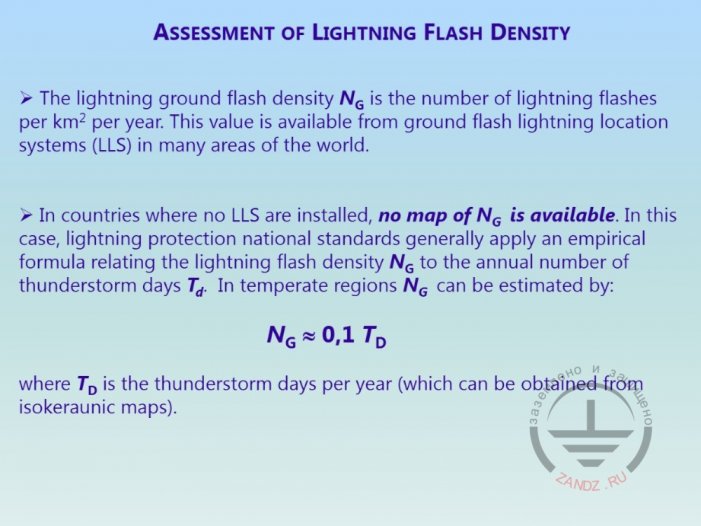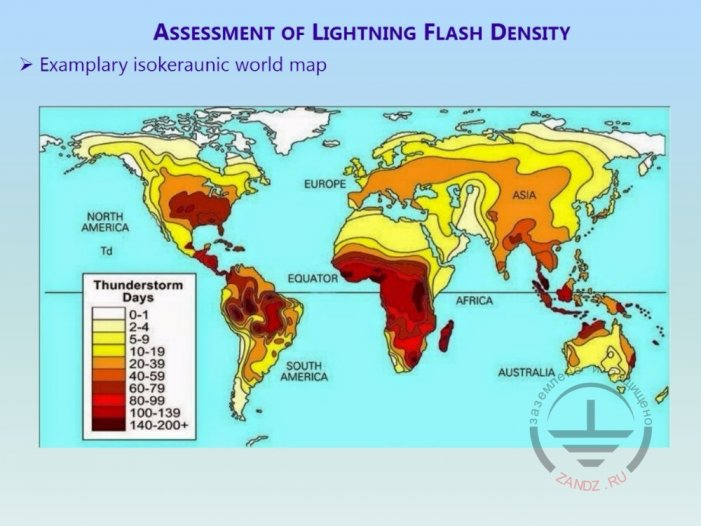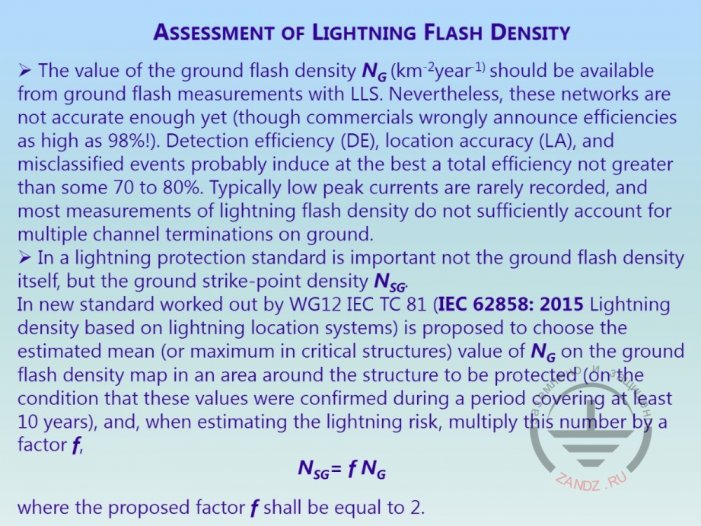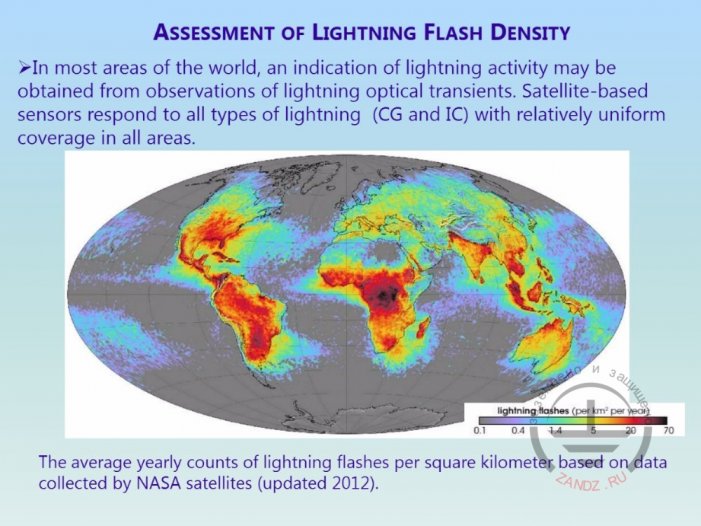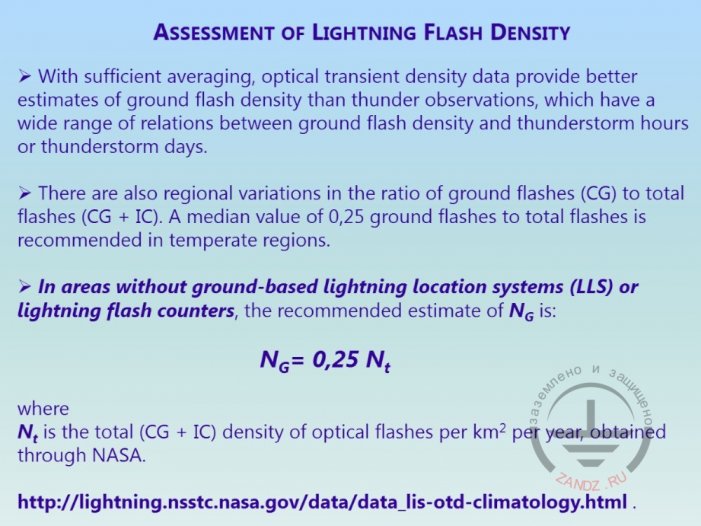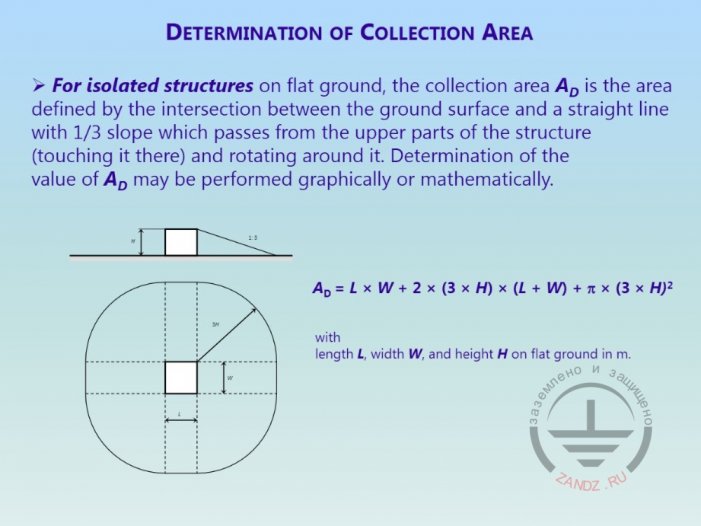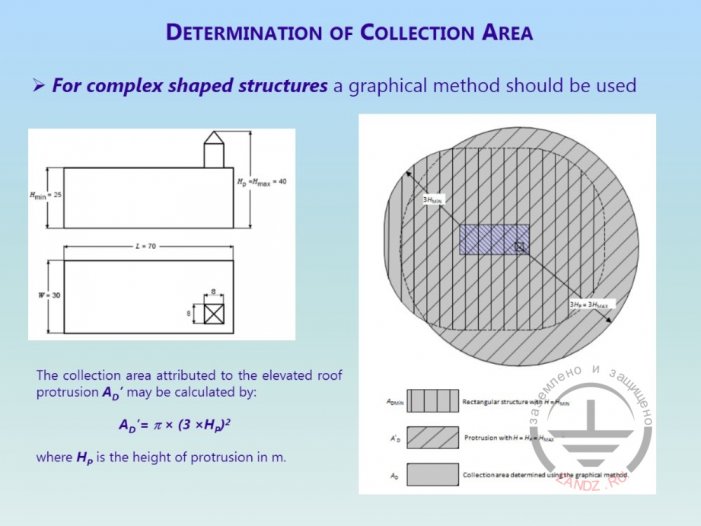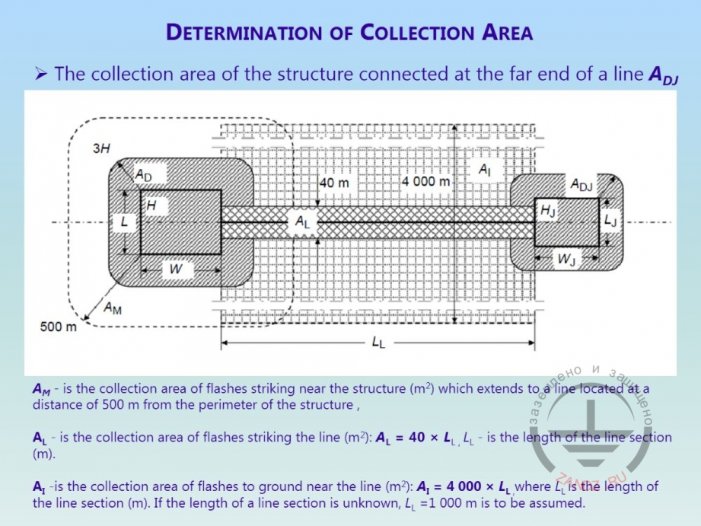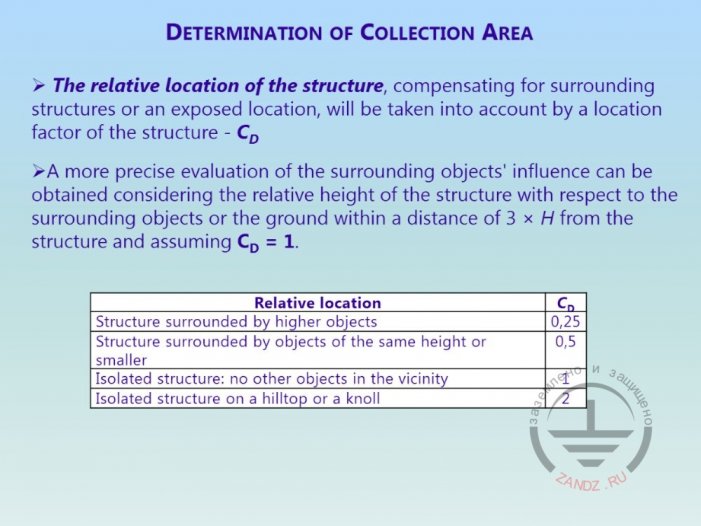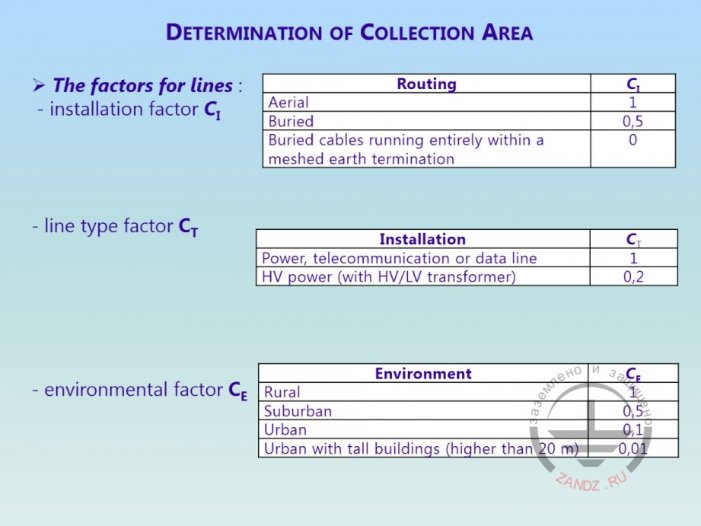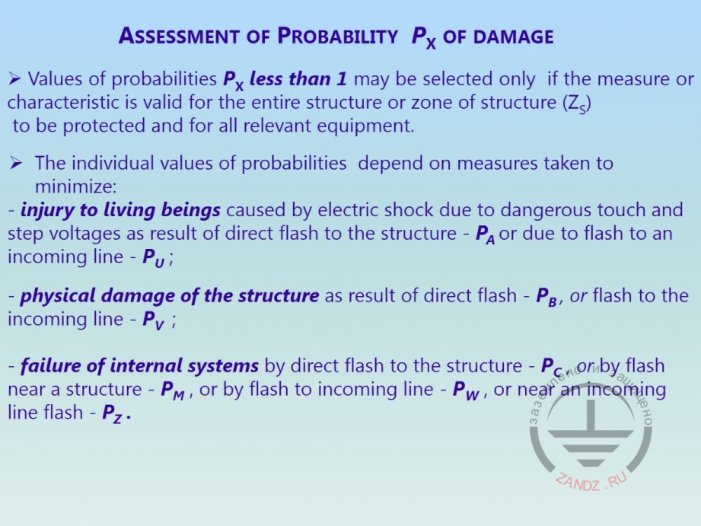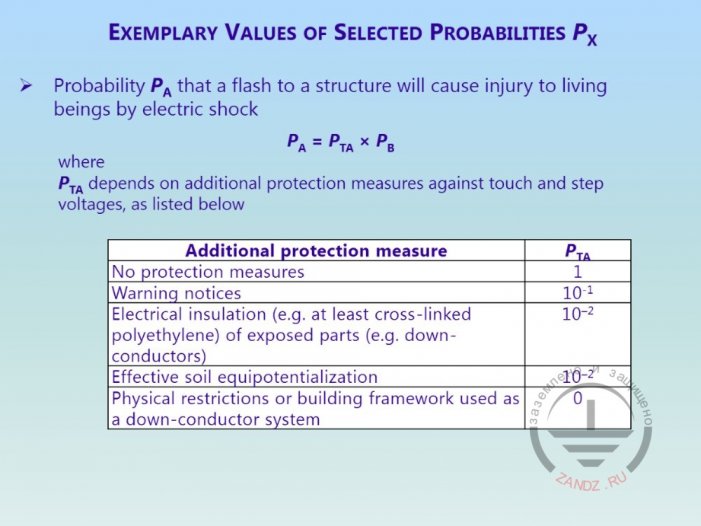The second webinar from the series "Grounding and lightning protection: International electro technical standard IEC 62305"
Webinar text. Page 2
Quick navigation through slides:
1. International electro technical standard IEC 62305
2. Configuration of IEC standards
3. Common topics and parts of the standard
4. Risk calculation
5. List of possible lightning strike points
6. Types of damage
7. Types of losses from lightning
8. Analysis of lightning risks
9. Calculation and estimation of lightning protection components
10. Individual risk components
11. Risk management
12. Methodology of risk assessment
Page 2:
13. Admissible risk
14. Estimation of risk components
15. Estimation of lightning strikes density
16. Map of thunderstorms
17. Charge density on the ground in a certain point
18. Density of charges around the world
19. Calculation of lightning strikes density
20. Determination of lightning strikes square
21. Calculation methods
22. IIlumination system
23. Relative position of the structure
24. Factors of impacts on the equipment
25. Estimation of damage probability
26. Approximate values of damage probability
27. Classification of lightning protection systems
28. Calculation of internal systems failure probabilities
29. Risk of mortality and injury of people
30. Estimation of damage sum
31. Economical damage
32. Estimation of losses costs
33. Summary risk estimation
34. Risk estimation program
35. ALRISK software
36. Implementation of the third version of software
37. Questions and answers
Admissible risk
— Now a few words about admissible risk. For L1- it is human life loss. L2- loss of public services. L3- loss of cultural heritage objects. And you see, these figures according to these standards are 10 in minus degree five, 10 in minus degree three, 10 in minus degree four. There is also a very certain situation, if we, for example owners, that is the factors are economical. And it must be based on comparison of protection cost and economic advantages.
Estimation of risk components
— In order to estimate risk components, these individual components. And these risk components can be calculated in the same way. We still have three parameters - it is a number of dangerous events, connected with lighting in a year, and P is the probability of construction damage and L - further losses. And it is very important how we should estimate the expected number connected with lightning and how dangerous it is for buildings. And here we need to estimate lightning density and charge density and level of grounding per square kilometre here where the building or installation was built and where lightning can happen. We are collecting and accumulating data here. Also the area which is captured or which is covered by lightning strikes. And it turns out so, that we look at the place where the discharge hits and which is near. And we look at the building parameters and on how installations are located. I can explain you how to calculate it. We can communicate. And here the expected number of events, it is also important in terms of building arrangement. This arrangement, location may increase risks or reduce them. So, for instance, if only one part of the area is in danger or wider. It means, there may be a zone which is more subject to direct damage. Or it can be city environment, for instance. And there might be too many neighbouring structures, buildings and it increases the risk. So, we need to start with the estimation of the number of these dangerous events, connected with lightning during a year.
Lightning strikes density estimation
— And for this reason, we need to find information, connected with the density of discharges. And this information is being collected in many countries. There are systems of lightning location, they are called LLS in many world places. It is a system, which defines where lightning is at the present moment. I don't know if there is such a system in Siberia. Unfortunately, I have no information about that. About these systems in Russia, whether they exist, and what are they.
Map of thunderstorms
— But we also have International Meteorology Institutes, which from time to time publish statistical data on thunderstorms. And here is the map that shows how serious this problem is and how different it is in different corners of the world. That means, in some parts of the world, lightning happen much more often. You see, closer to the equator or for instance in the North of Russia, the number of thunderstorms is less. Or for example, there can be 20-25 thunderstorms a year.
Discharge density on the ground in a certain point
— And another effort of this estimation. Lightning strike density is also present in IEC 62305 standard and there is new information here, new parameters, which I consider more valuable for protection. You see here, it is called discharge density on the ground in a certain point. We take the building into account and see the density figure. In this case, we will get a more precise calculation. And the new standard was developed in IEC 62858.
Discharges density all over the world
— We also estimate the quantity of data, which are connected with the lightning density all over the world. Satellite observations are carried out by NASA. If you visit NASA site, there are three axes there, which are being studied. And in 2012 all the data bases were updated. And the calculations of the world lightning density are general there.
Calculation of lightning discharges density
— Here you see a link, where you can find additional useful information. Or there are some geographical areas, where there is no LLS system and there optical observations of discharges take place. And common figures are being counted, they are not integrated. The observations include cloud and thundercloud observations as well. Here it is more important for lightning protection. Of course, it is necessary to see the building on the ground first of all. We have a potential data source; it is NASA database, satellite information. And we can enter this base and use the formula of lightning discharges density calculation for our calculations.
— If you don't mind, I would make a little pause for your questions to this general description of parameters which influence the values and the fact how high lightning risk is according to IEC standards. If you have questions, please put them down, I will read them and Anastasia, our interpreter, will translate my answers from English. Please write your questions in Russian, I will read them from my screen and answer. No question yet? Please don't be shy. OK, first question.
— «"Is Ng, obtained in an instrumental way, taken into account in the calculation in Poland?". Yes and the first question is connected with Poland.
If there are no questions, I'd like to continue.
Determination of lightning strikes square
— And by the determination of zones, lightning strike points. We look at the intensity and number of events connected with lightning. We need to know lightning density and how many lightning are collected in the structure. We can estimate an individual structure, which is not connected with each other, using this formula. These are simple calculations.
Calculation methods
— There are complex structures and more interrelated. And then we need to calculate the zone, where all these lightning strikes arrive, more accurately. And you see, we are considering all lightning strikes here and make corresponding calculations in order to estimate the whole coverage area. This coverage area is usually multiplied by the density of discharges. And we also see what buildings are located there.
Illumination system
— It is also important, if it is present here, for example, in the city environment, where there are many buildings together, how illumination is arranged. It means there can be a lightning discharge near, so it may bring damage to the neighbouring structure, the one where we want to protect the neighbouring building. There are components of this coverage zone which we want to take into account. We also study illumination here.
Relative arrangement of the structure
— Here the number of dangerous events, which is taken into account, is connected with interrelated locations near the building. So, if it is an interrelated construction, we multiply it by 2. But if it is city tight place and it is surrounded by the objects of the same height or smaller, then we get a value less than 1. So, the quantity of possible events is lower. There are three components, which influence our calculations by figures.
Factors influencing the equipment
— When we calculate the number of possible lightning strikes and think of protection. Overhead power lines which are connected to the building are also an additional factor influencing the equipment. The types of these overhead power lines or other energy transmission lines. These three parameters - underground, for example electric energy supply, from above or telecommunications, that means, what types of overhead power lines. Also, if there is a transformer in this structure.
Estimation of damage probability
— The nest part of the webinar - estimate damage probability Px. There is each individual component and it means that there is one or several zones and what the probability is. For example, if there is a probability of an injury or wounding of people, also physical destruction of a building or failure in functioning of internal systems and equipment. Depending on that, we develop measures and see if they already exist. If there are, we take measures to reduce the potential damage and the probability decreases significantly.
Approximate values of damage probability
— These figures show how the risk of probable damage decreases in each individual case. If, for example, there is a probability that a lightning strike hits the building in rural area, for instance, and there can be physical damage to people due to electric discharges, then we should use Pta models, that is models of reducing probabilities. It depends on the correctly chosen protection measures. Here is the list. Let me repeat myself, if we don't have protection measures, then the overall probability figure will be equal to 1. Even if we take any measures, we reduce. Here you see various protection types, different figures.
<< Previous Page
Slides from 1 to 12
Next Page >>
Slides 27 to 37
Useful materials for designers:
- Webinars with the leading industry experts
- Everything for the calculation of grounding and lightning protection
- Useful materials: articles, recommendations, examples
Related Articles:


